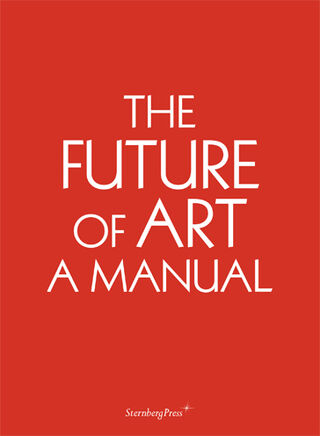TERENCE KOH
Rare Bookavailability unknown, if interested please write an email
In his work, Terence Koh mobilizes seduction, lust and desire. These moments exemplify a strategy that integrates a queer, polymorphously perverse approach into art production. The meaning produced by his objects is tightly interwoven with both private narration and a wide range of subcultural fields of association. Koh frequently employs trivial materials, which are then transformed in the artistic process and transposed into an almost classical aesthetic.
Terence Koh generiert in seinen Arbeiten Momente der Versuchung, der Lust und des Begehrens. Sie stehen exemplarisch für die Strategie, queere, polymorph perverse Zugänge in die künstlerische Produktion einfließen zu lassen. Die Signifikanz seiner Objekte ist angebunden an private Narration und ein weites Spektrum subkultureller Assoziationsfelder. Dabei verwendet Koh oft triviale Materialien, die durch seinen transformativen Umgang einer nahezu klassischen Ästhetik wieder eingeschrieben werden.
Terence Kohs Ausstellung in der Secession kreist um die Topoi Jugend, Schlaf und Tod. Die Installation im Grafischen Kabinett verfolgt die Idee, einen Raum zu schaffen, in dem der Künstler den Rest seines Lebens verbringen könnte.
Der Titel der Ausstellung gone, yet still, die Kurzform von "gone, yet still/ i lie in bed/ watching the stars" geht auf eine Art "Jisei" zurück, ein traditionelles japanisches Abschiedsgedicht, wie es von Samurai oder Zen-Mönchen kurz vor ihrem Tod verfasst wird. Auf dünnes Papier geschrieben, weht es den BesucherInnen im Treppenaufgang zum Grafischen Kabinett entgegen, der zu einer Art Passage zum Ort der Stille, der Leere, des Exils und des Rückzugs bis zum Tod wird. Sowohl der Treppenaufgang als auch der Raum oben mit all den darin enthaltenen Objekten sind ganz in Weiß gehalten. Das Weiß taucht den Raum in ein milchiges Licht und wird zugleich zum Vorboten der Transzendenz.
Terence Koh’s exhibition at the Secession circles around the topoi youth, sleep and death. In his installation in the Grafisches Kabinett the artist set out to create a space, in which he could spend the rest of his life. The title of the exhibition gone, yet still is a clip from a kind of jisei, “gone, yet still/ I lie in bed/ watching the stars”. A jisei is a traditional Japanese farewell poem composed by Zen monks or samurai shortly before they die. Written on thin paper it wafts and greets the visitors in the stairway leading up to the Grafisches Kabinett. It establishes a passage to a place of quiet, void, exile and retreat until death. The staircase, the exhibition space upstairs and all the objects in it are completely white. The white color bathes the room in a milky light and simultaneously acts as the harbinger of transcendence.
The installation in the Grafisches Kabinett is fundamentally shaped by a meditation about the design of a space for holding out, waiting for death and finally passing away. A story of refusal, Georges Perec’s novel A Man Asleep was inspirational for the piece. Shortly before graduating, a young man turns away from all social existence—its constraints, senselessness and futility—and decides not to engage with anything anymore. He gives over to aimlessness and slowly loses his feeling of belonging to the world. Finally the student abandons the experiment with the insight that his withdrawal from the world has no further consequence on the course of things.
A bed, a chair, a shelf, a refrigerator. Terence Koh combines this existential furnishing with the baroque opulence of more than 125 glass vitrines the size of fish tanks. They are filled with the devotionalia typical for Koh’s work: Animal figurines, little dolls, two kissing marble busts of the last pope, miniature Michael Jackson figures, Chinese reincarnation statues, plastic dinosaurs, insects, etc.—some are filled with water, others bear the traces of a ritual.
The installation is infused with symbols and an overall atmosphere of gay sexuality, images of youthful bodies, faces, butts and cocks. Ultimately, Koh creates an open space, a queer space, in which sexuality is represented as a fact and not as an argument. In his work, sexuality is not subject to moral, ideological, or restrictive constraints, but rather tempts us to forget the hardships and diremption of existence. The installation is less of an autobiographical display than an attempt to bring to mind the fragility of a single life, to document the “Boudoir” of an existence, in which death is ever present as the only certain and simultaneously unknowable fact.
Terence Koh illustrates the ambivalence of human existence: the desire to obsessively engage with the world, to realize longing in a space outside of oneself, and simultaneously the infinite loneliness that every human knows and experiences over and over again. His exhibition is a confrontation with death as a necessarily abstract idea. In the loneliness of the room it can be imagined as a relief, as a threat, or as the blackmail of others. It transforms the glass boxes overflowing with objects into coffins. The harmony of the scene is shattered by a number of smashed and shattered vitrines. The resonance of these arbitrary acts, the violence that suddenly presents itself in the space prevents the installation from simply looking like a still image frozen in time and recalls the circular but unpredictable life that precedes death.







